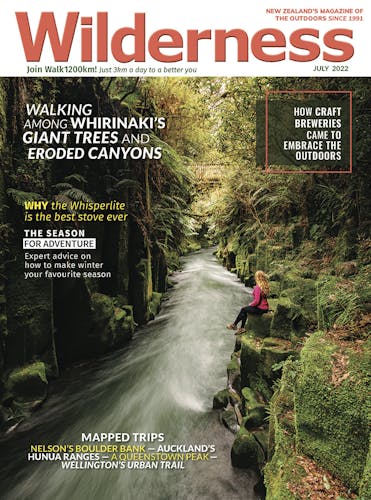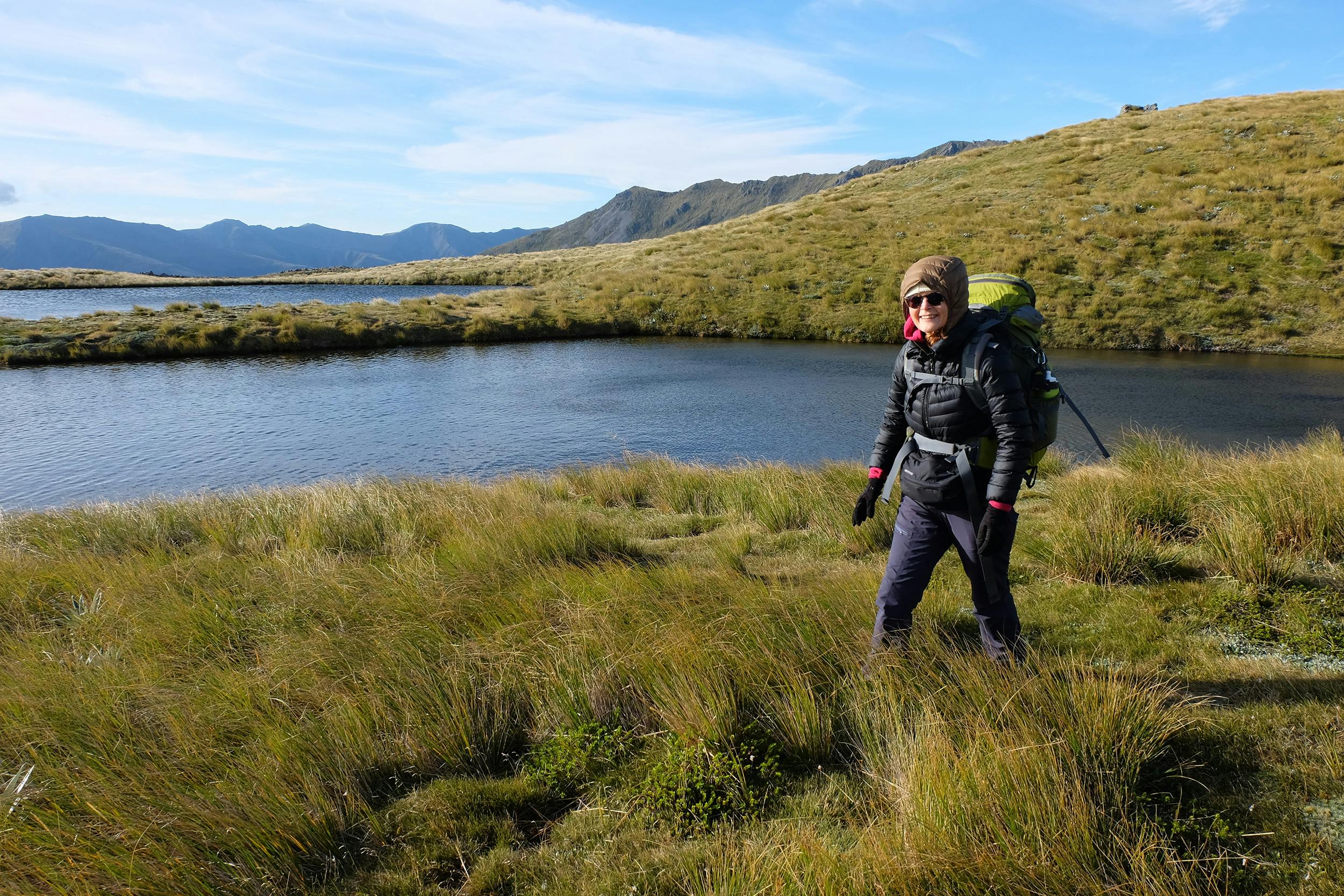Walk1200km is a challenge but for some, it’s not about going further or fastest. Rather, it’s about the journey and taking time to smell the flowers.
You might call it walking slowly. I call it savouring.
If you pass me, you might attribute my lei-surely pace to age or a pack that’s too heavy. The truth is, ever since childhood, I’ve preferred taking my time.
I joined Walk1200km five weeks after Auckland went into lockdown, just as I started to tire of repeating the same neighbourhood walks. The challenge gave me a fresh focus and, with the invitation to share walks on the group’s Facebook page, the opportunity to combine two of my favourite activities – walking and photography.
My unhurried pace lets me see and photograph things otherwise overlooked, that can add to a walk’s appeal.
I think my style of walking was shaped by exploring field, bush and beach in Hawke’s Bay with family and on trips with Junior Forest & Bird. Walks were made to feel like treasure hunts. If you rushed, you’d miss things, the things that can turn a ‘boring’ walk into something magical. I recall some early finds – the katipō under driftwood, flowering mistletoe in the canopy, a dead pūriri moth amongst leaf litter. Today, I’m still a keen observer, though I capture whatever I see, whether fungi, plant or bug, not in a jar but on a camera. iNaturalist has become a favourite tool to identify and share discoveries.
Walking for me is not about the kilometres or speed to a destination. My aim is to have the flexibility to linger, make the most of daylight hours, even if it means ending up on a top bunk.
On multi-day tramps, I try to stay in every hut or stop two nights or more in one place. One of my best experiences in recent years was walking the Heaphy Track solo over six days. It gave me time to backtrack in the rain to watch Powelliphanta (giant snails) slither across the path, spend hours on Gouland Downs enjoying the weird and wonderful plant life (a highlight was the insectivorous sundew) and stay up late watching for kiwi at Saxon Hut.
I’ve found having breathing space on a walk allows for more spontaneity, to perhaps venture up a sidetrack, swim in a lake, boil the billy at a viewpoint, or pause for a chat with another walker or a ranger. All these experiences and chance encounters deepen my experience, and make me feel more ‘at one with nature’.
The downsides? I don’t count being the last to arrive at a hut, nor that finding tramping buddies who favour a more relaxed pace takes more effort (they’re out there, among them my daughter, a self-confessed plant nerd). Their focus may be different, but that’s a plus. There’s always something new to see and learn. The only thing I do have to watch is time. I can get so engrossed, that the hours fly by. This happened once in Whirinaki Forest. A friend and I spent too long admiring the podocarps and combing the stream for whio and had to negotiate windfall and slips in the dark.
Walking this way isn’t necessarily a soft option. You still have to crank up the pace at times. Fitness is important if you want to climb mountains (I’m fascinated by what grows in alpine zones) and stay in shape for your next multi-day adventure. Walk1200km has helped keep me on track, particularly given I live in the city and much prefer walking in wild places than on pavements. I love that we’re a community and regardless of how we walk, we all have a common goal: to get out there.
What is Walk1200km?
If you haven’t signed up for the Walk1200km challenge already, you might be wondering what it’s all about?
Simple really: the goal is to walk 1200km over 12 months (it takes just 45-minutes a day). The challenge officially started in September 2021, but you can join at any time. Head here to find out more.







